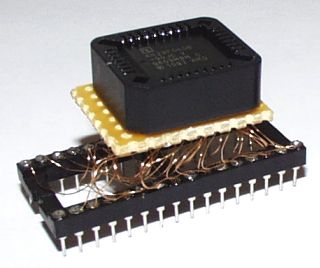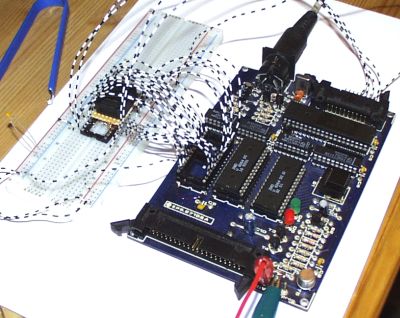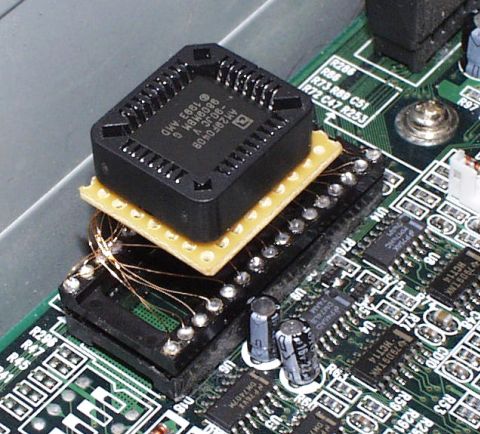
 |
Here is a picture of the original FlashROM (an Atmel 29C020). I downloaded the datasheets for this chip and decided not to program this chip because of its unusual programming algorithm. I also wanted to have a true (working) backup. |
| This picture shows the result of my work - a PLCC-socket with flying vero-wire wires soldered to a DIL-socket. Well, not the nicest version (no PCB...), but for one single chip in my opinion the best solution. |

|
 |
Here you can see the mentioned microcontroller board with the connected FlashROM. Looks crazy? - No thats normal! ;) |

| This is the print version. Back to normal view |